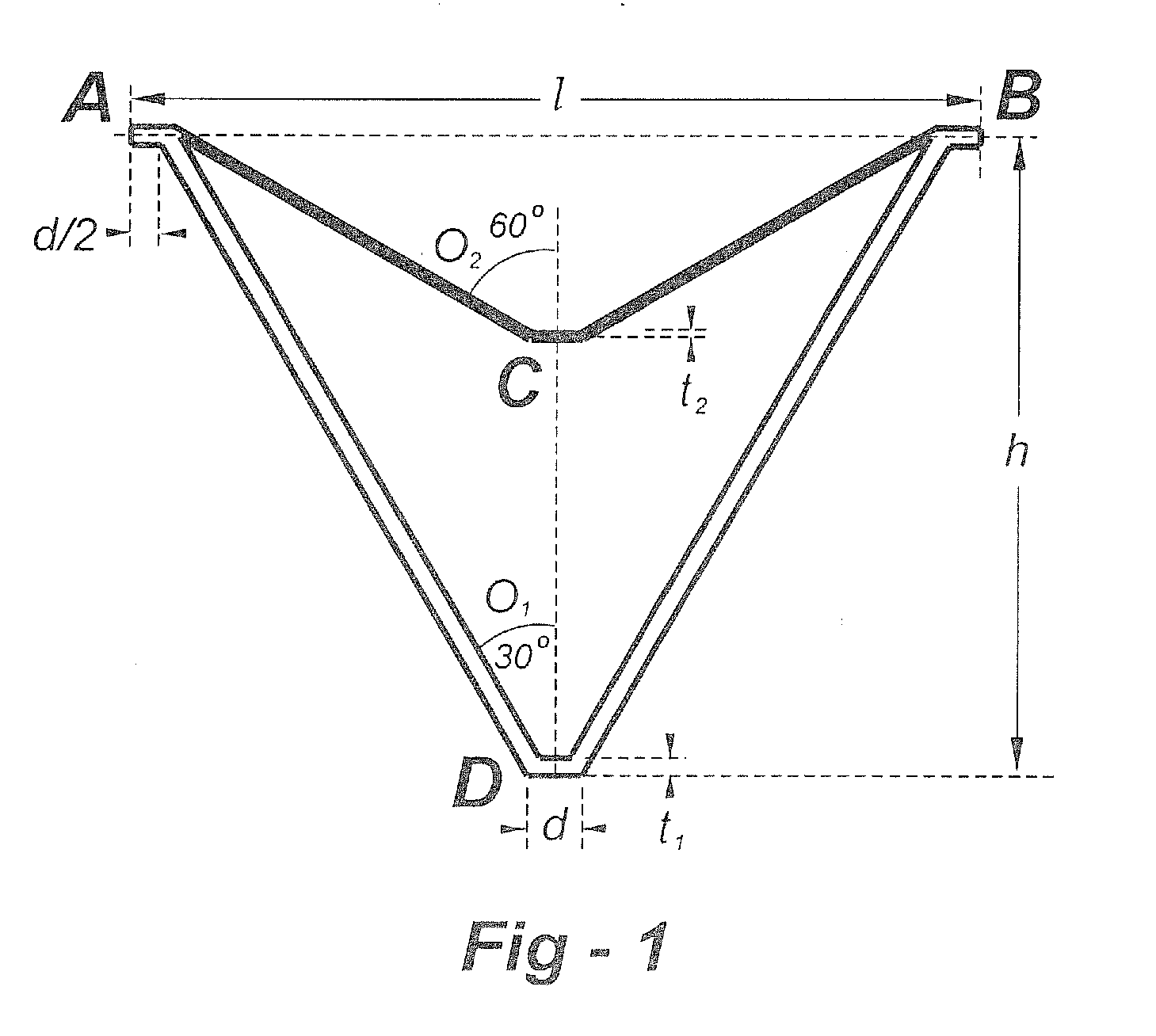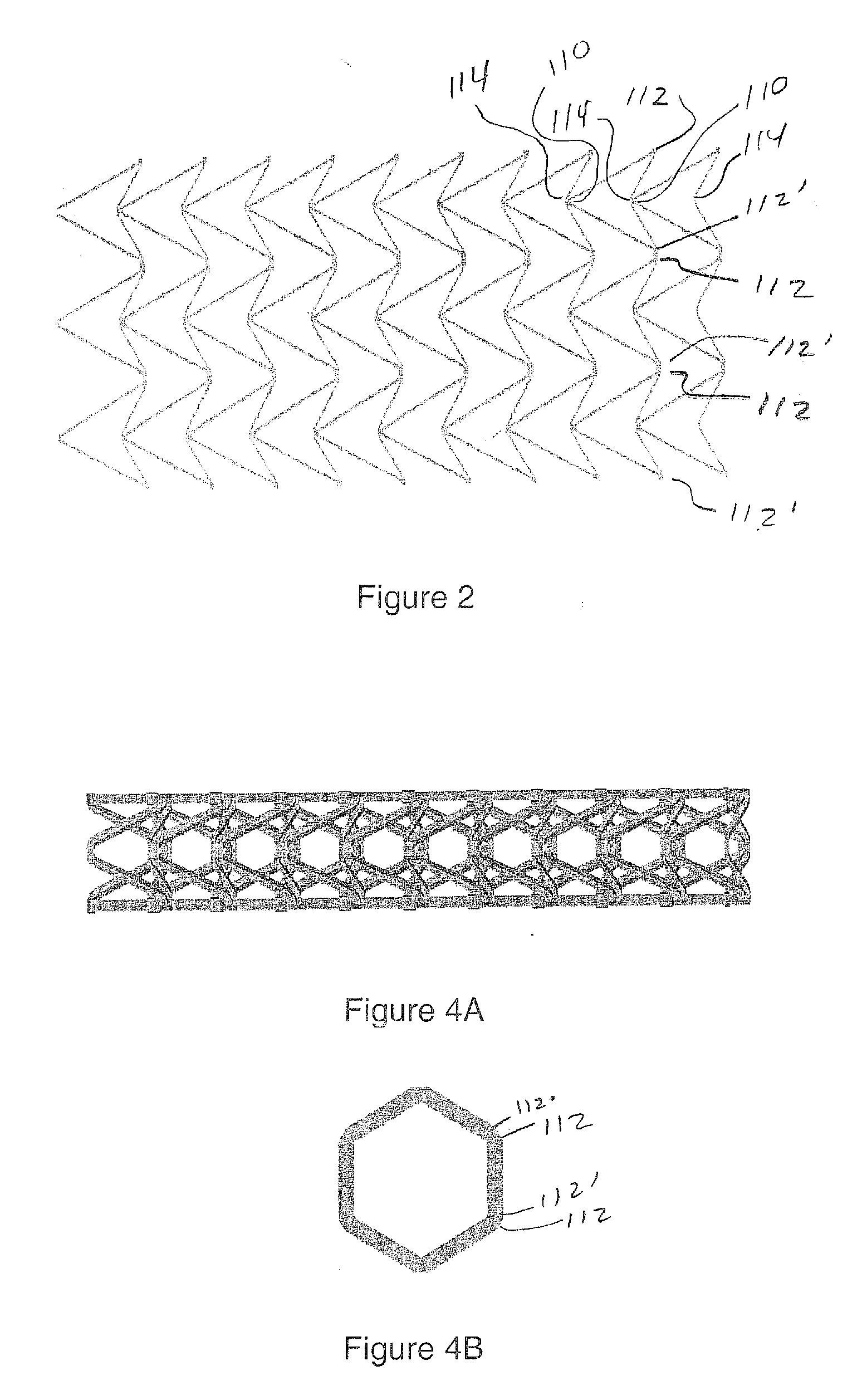Auxetic stents
a technology of stents and stents, applied in the field of stents, can solve problems such as the shrinkage of the cross section of the structur
- Summary
- Abstract
- Description
- Claims
- Application Information
AI Technical Summary
Benefits of technology
Problems solved by technology
Method used
Image
Examples
Embodiment Construction
[0069]This invention is directed to negative Poisson's ratio (NPR) or auxetic structures and, in particular, to three-dimensional auxetic medical / surgical stents. As an introduction, co-pending U.S. patent application Ser. No. 12 / 267,867, describes a pyramid-shaped unit cell having four base points defining the corners of a square lying in a horizontal plane. Four “stuffer” members of equal length extend from a respective one of the base points to a fifth point spaced apart from the plane. Four “tendon” members of equal length, but shorter than the stuffers, extend from a respective one of the base points to a sixth point between the fifth point and the plane. In a preferred embodiment, a line drawn through the fifth and sixth points is normal to the plane.
[0070]The stuffer and tendon members may have a rectangular, round, or other cross section. The stuffers and the tendons may be of equal or unequal length, and may have equal or unequal cross sections. The stuffer and tendon membe...
PUM
 Login to View More
Login to View More Abstract
Description
Claims
Application Information
 Login to View More
Login to View More - R&D
- Intellectual Property
- Life Sciences
- Materials
- Tech Scout
- Unparalleled Data Quality
- Higher Quality Content
- 60% Fewer Hallucinations
Browse by: Latest US Patents, China's latest patents, Technical Efficacy Thesaurus, Application Domain, Technology Topic, Popular Technical Reports.
© 2025 PatSnap. All rights reserved.Legal|Privacy policy|Modern Slavery Act Transparency Statement|Sitemap|About US| Contact US: help@patsnap.com



